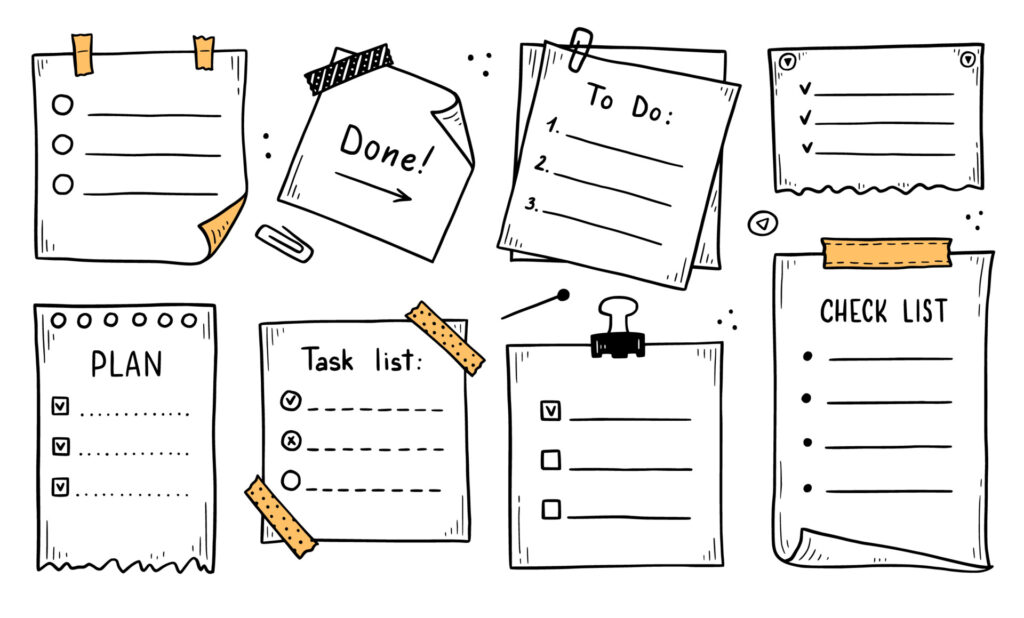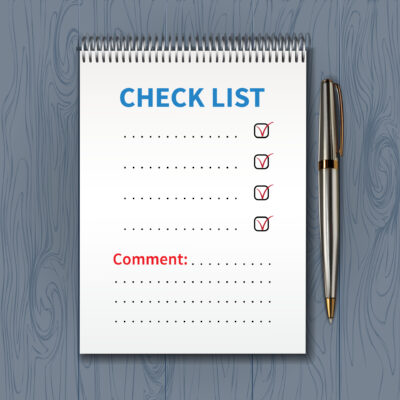Struggling to plan your day effectively? Learn the differences between checklists and to-do lists, how to avoid common planning mistakes, and practical tips to prioritize your day for maximum productivity.
When it comes to getting organized and tackling tasks, small business owners often turn to one of two things: the checklist or the to-do list. Though they might seem like they’re one and the same, each serves a unique purpose and works best in different scenarios.
If you have ever found yourself juggling multiple priorities, wondering why your lists don’t seem to be helping, you are not alone. Here’s a practical look at checklists vs. to-do lists and how to avoid the five biggest planning mistakes.
This article explores the difference between checklists and to-do lists, the benefits of each for productivity, how to prioritize your day effectively, common planning mistakes to avoid, and practical tips that will make your organizing easier and your day more productive
Checklist vs. To-Do List: What’s the Difference?
What is a Checklist?
A checklist is a simple yet effective way to break down a task into steps or ensure you do not miss any important details. Checklists for productivity work well when you have specific, repetitive tasks that need to be done in a certain order. They keep you on track without requiring much thought—perfect for those “autopilot” moments.
Benefits of a Checklist
- Consistency and Accuracy: Checklists are ideal for tasks that must be done the same way every time, such as project planning checklists or goal-tracking tools. They keep you consistent, preventing little things from falling through the cracks.
- Eases Mental Load: Once you have got your checklist in place, you no longer have to remember every single step. This can be a huge time management boost, letting you focus on the bigger picture instead of minor details.
- Builds Momentum: There is something incredibly satisfying about checking off each item as you go, isn’t there? Try it! Seeing progress visually can motivate you to keep moving forward, even on the tough days.
What’s a To Do List?
A to-do list is like a “brain dump” of everything you need to accomplish. Unlike a checklist, it is not always broken down into specific steps, so a to-do list might include anything from “send email to client” to “organize the storage room.” You can rearrange tasks by priority, assign due dates, and tick off completed items as you go.

Benefits of a To Do List
Flexibility and Prioritization: The to-do list is a versatile planning tool for organizing tasks by priority. It can change daily, allowing you to shuffle tasks based on urgency or time-sensitive needs.
Adaptable Across Tasks and Projects: From one-off tasks to ongoing goals, a to-do list is a personal task manager that evolves with you. You can add new items without disrupting the list’s structure, making it useful for those random ideas or immediate priorities.
Simplifies Big Goals: To-do lists help you outline small steps toward a big project, making even the most overwhelming tasks feel manageable.
Avoiding the 5 Common Planning Mistakes
While both checklists and to-do lists can be useful, they can also lead to frustration if not used effectively. Here are five planning mistakes to avoid:
Mixing Routine Tasks with Complex Goals
It is easy to throw everything on a to-do list, but not all tasks are created equal. By separating routine tasks (like “send invoices” or “respond to emails”) from your larger goals (like “launch new product line”), you can stay more focused.
Skipping Task Prioritization
Trying to tackle a list without prioritizing leads to wasted time. Start with the most critical tasks or those with approaching deadlines. Prioritizing your day makes it easier to stay on track and reduces stress by breaking tasks into manageable pieces.
Overloading Your List
A mile-long to-do list or overly detailed checklist can be discouraging. Instead of cramming everything into one day, use a daily task list and limit it to five to ten items. Anything more than that, and you’re likely to end up overwhelmed.
Forgetting to Review Progress
Planning is great, but what is the point if you never check back on your progress? Set aside time weekly to evaluate what you’ve accomplished and re-prioritize as needed. A weekly goal-tracking checklist can help keep your long-term goals on course.
Ignoring Digital Tools
Digital checklist apps and task management tools can make a world of difference in organizing tasks and prioritizing effectively. Tools like Trello, Todoist, and Notion are all great options for small business owners.
How to Prioritize Your Day
Creating a daily goals checklist or to-do list is only half the battle; knowing how to prioritize is the secret sauce for productivity. Here’s a step-by-step on how to make sure you’re working on the right stuff at the right time.
- Start with Big Goals: Begin with your highest-priority tasks. These are usually big-picture goals, such as client work or income-generating activities.
- Group Similar Tasks Together: Batch tasks that require similar actions—like responding to emails or updating your website. Time management strategies are easier when you’re not constantly switching gears.
- Add in Small Tasks as Fillers: Have a few minutes between meetings? Knock out a couple of smaller tasks from your list.
- Use a Time-Blocking Checklist: Block out chunks of time for specific types of tasks. For example, you could designate Monday mornings for “planning routines” or afternoons for creative work.
- Review and Adjust as Needed: At the end of the day, review your list. Move anything unfinished to tomorrow, but don’t get discouraged! Not everything goes as planned—adjusting is part of the process.
Practical Tips for a Productive Day
Keep it Simple: Do not go overboard with detailed lists. Focus on what truly needs to get done.
Automate When Possible: Use tools that send reminders, track your progress, and create a reliable personal task manager.
Take Breaks: Even the best-laid plans can wear you out if you are pushing too hard. Breaks are vital for a clear mind.
Celebrate Wins: No matter how small, ticking things off your list should be celebrated. It will keep you motivated!
Conclusion – Checklist vs To Do List
When it comes down to it, both checklists and to-do lists have their unique place in a productive day. By understanding the purpose of each and using them effectively, you can avoid those common planning pitfalls that leave you feeling frustrated.
Whether it is the consistency of a checklist or the flexibility of a to-do list, making the right choice can mean the difference between just “being busy” and truly being productive. So go ahead, give these tips a try and start planning your day like a pro!
Consult BCINC for assistance TODAY
Related Articles
Learn Ways to Manage Time Effectively – An Important Skill
FAQ for Checklist vs To Do List
What is the main difference between a checklist and a to-do list?
A checklist is best for routine, sequential tasks that need to be completed in a specific order, while a to-do list is a flexible list of various tasks to accomplish without a strict order.
When should I use a checklist vs. a to-do list?
Use a checklist for repetitive tasks requiring accuracy (like a morning routine checklist), and a to-do list for varied daily tasks where priorities can shift.
How can I prioritize tasks effectively?
To prioritize, start with high-impact tasks, batch similar items, and use time-blocking techniques to stay focused on what matters most.
What is the best way to avoid planning mistakes?
Avoid planning mistakes by not overloading your list, grouping similar tasks, prioritizing, and regularly reviewing your progress.

